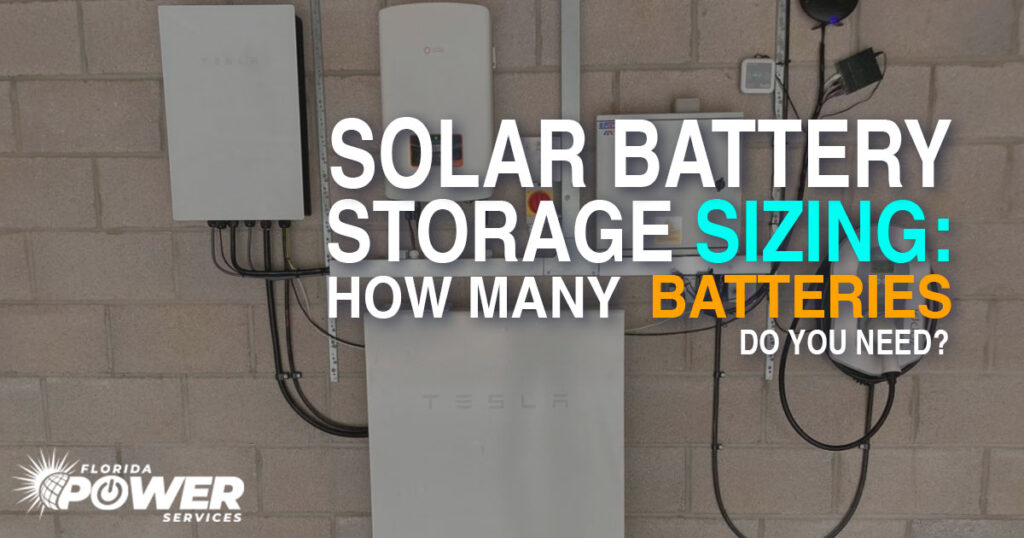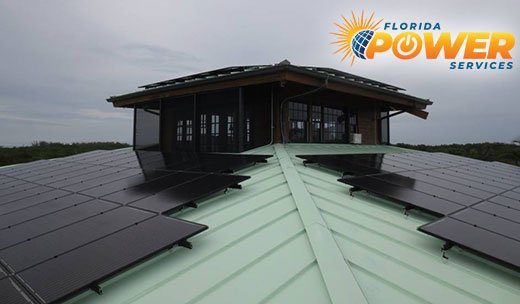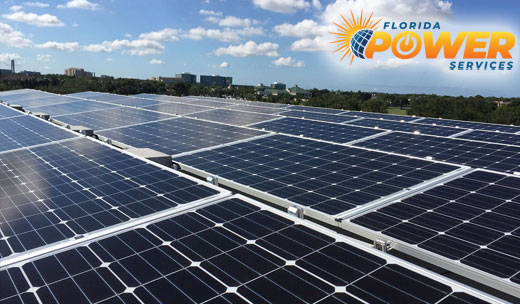Powering your home overnight with solar is more than possible. It’s practical. However, one of the biggest questions homeowners have is how much battery storage they need. A system that’s too small might leave you in the dark before sunrise, while overspending on capacity you don’t use can waste thousands of dollars. That’s why it’s important to size your battery system based on real numbers and smart planning.
In this guide, we’ll walk you through the key steps to calculate the right solar battery storage sizing for your home, using your energy usage and solar production as the foundation. Whether you’re just starting to explore solar or planning an upgrade, we will help you design a system that’s reliable, efficient, and ready for anything.
☀️ Step 1: Know When Solar Panels Actually Power Your Home
Most solar panels produce power from 9 AM to 4 PM. This timeframe is your solar window. During these hours, your panels run your home and charge your batteries. After 4 PM, the panels stop producing enough power. At that point, the battery takes over. To stay fully powered, you need enough battery energy to last from 4 PM until 9 AM the next morning. That’s a 17-hour stretch.
📈 Step 2: Find Your Daily Power Usage
To get your solar battery storage sizing right, you need to know how much energy your home uses each day.
- Look at your electric bill.
- Find your monthly kWh usage.
- Divide that number by 30 to get a daily average.
Example:
- Monthly usage: 1,200 kWh
- Daily usage: 1,200 ÷ 30 = 40 kWh per day
🔍 Step 3: Calculate How Much Power Should Come From Batteries
Your panels cover about 30% of daily usage during the daylight hours. The batteries need to supply the other 70%.
Formula:
Daily kWh × 0.70 = kWh needed from battery storage
Example:
40 kWh × 0.70 = 28 kWh of battery storage needed
⚠️ Step 4: Add a 15 to 20 Percent Buffer
Real-world performance varies based on temperature, inverter loss, battery discharge depth, and how much power you use at night. To play it safe with your solar battery storage sizing, add a buffer.
Formula:
Battery need × 1.15 to 1.20 = final recommended storage size
Example:
28 kWh × 1.20 = 33.6 kWh usable battery capacity
✅ Final Answer
If your home uses 40 kWh per day, aim for 33 to 35 kWh of usable battery storage to keep everything running smoothly through the night. This estimate includes a 15 to 20 percent buffer to account for real-world factors like inverter efficiency, depth of discharge, and changing energy demands.
Getting your solar battery storage sizing right ensures that your system provides consistent, uninterrupted power, even during extended outages or cloudy days. Proper sizing also helps extend battery life and protects your investment over time.
⚙️ What Does That Look Like in Real Systems?
Now that you have an idea of how to calculate your energy needs, it helps to see how that translates into real battery products. Different manufacturers offer varying capacities per unit, so the number of batteries you’ll need depends on the brand you choose. Below is a comparison of popular battery options and how they align with the estimated 33 to 35 kWh requirement based on proper solar battery storage sizing.
| Battery Type | Usable kWh per Unit | Units Needed |
| Tesla Powerwall 3 | 13.5 kWh | 3 units |
| Enphase IQ 5P | 5 kWh | 7 units |
| HomeGrid Stack’d | 14 to 28 kWh | 1 to 2 stacks |
🧠 Tips From the Field
Build with enough capacity. Don’t cut corners when sizing your system. A single battery might seem cost-effective upfront, but in real-world conditions, it likely won’t store enough power to keep your home running overnight.
Use a critical load panel. Most battery backup systems include a critical load panel, which separates the circuits you want to keep powered during an outage. Focus on essential items like lights, refrigerator, Wi-Fi, outlets for charging, and medical devices. Leave out energy-hungry equipment like pool pumps, electric dryers, or EV chargers at night. This setup allows your system to use its stored energy more efficiently and helps optimize your solar battery storage sizing strategy.
Plan for the future. Your power needs may grow. You’ll want to account for that in your battery storage calculations now if you’re planning to add an electric vehicle, hot tub, additional HVAC units, or switch to an electric water heater. It’s usually more affordable to size for future usage from the start than to add more batteries later. Smart planning today ensures your system continues to meet your needs for years to come.
❓ People Also Ask
How long does a solar battery last overnight?
A 10 kWh battery can run a home for about 6 to 7 hours, depending on your power use. To last through the night, proper solar battery storage sizing is essential.
Can a solar battery run your home all night?
Yes, if the system is sized correctly. For homes using 40 kWh per day, a 33 to 35 kWh battery system usually works well.
How many solar batteries does a house need?
Most homes need 2 to 3 batteries for full overnight backup. The exact number depends on the battery type, daily consumption, and how carefully you approach your solar battery storage sizing.
⚡ The Bottom Line
To run your home overnight using solar and battery power, size your battery to cover around 70% of your daily usage. Then, add a 15 to 20 percent buffer to handle inefficiencies and unexpected loads. In most cases, a home that uses 40 kWh per day will need about 33 to 35 kWh of usable storage.
That’s the smart way to handle your solar battery storage sizing. It gives you peace of mind, keeps your lights on, and helps you stay independent from the grid.
📞 Let’s Design Your Battery System
Florida Power Services has installed solar systems across the state since 2007. We help homeowners design systems that match their energy needs, their roofs, and their long-term goals. We size systems for reliability and future growth, not just minimum specs.
We’ll review your electric bill, your home’s layout, and your goals. Then we’ll recommend the ideal solar battery storage sizing for your situation. You’ll get honest numbers, expert support, and a system that’s ready for anything.

















